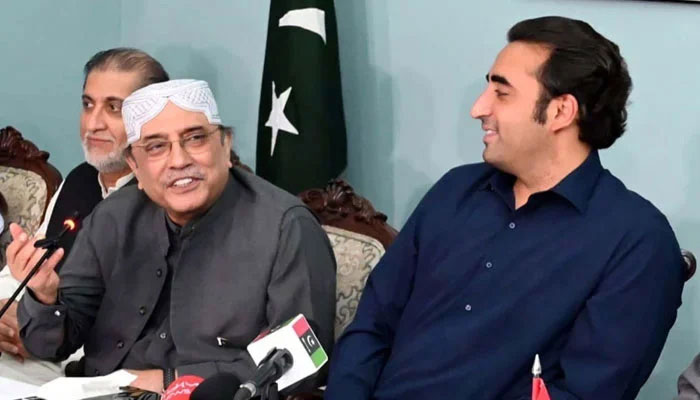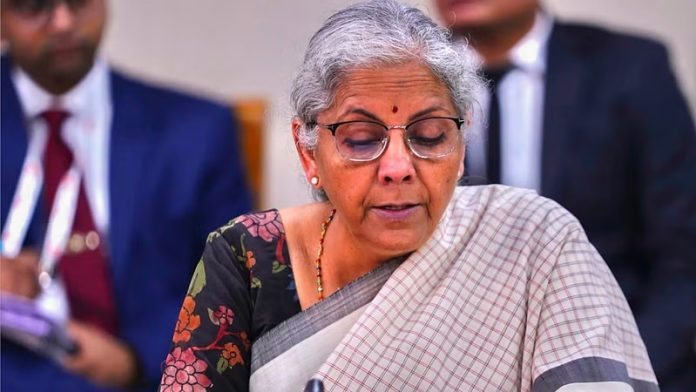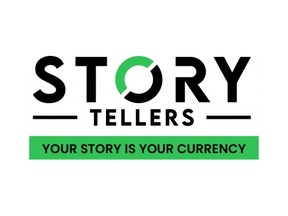9k game slot online
2025-01-13 2025 European Cup 9k game slot online
News
Will WSU be able to keep QB John Mateer when transfer portal opens?
best online slot game reddit
。
Aspen Group Reports Positive Cash from Operations Fiscal Year-to-Date
Berry Petroleum stock hits 52-week low at $3.87Poor antiflood strategies
Henri of Luxembourg announces he's abdicating: Son Prince Guillaume will take over as Grand Duke in October as his father becomes the latest Euro royal family head to step aside for the next generation
Colby Rogers shines as Memphis rolls past Ole MissFacing SC State, Georgia aims for best start in nearly a century
Enghouse Acquires Aculab PLCTexas hosts Northwestern State, hopes to ride momentum into SEC play
AP Sports SummaryBrief at 6:49 p.m. ESTWEST PALM BEACH, Florida, - President-elect Donald Trump on Saturday sided with key supporter and billionaire tech CEO Elon Musk in a public dispute over the use of the H-1B visa , saying he fully backs the program for foreign tech workers opposed by some of his supporters. Trump's remarks followed a series of social media posts from Musk, the CEO of Tesla and SpaceX, who vowed late Friday to go to "war" to defend the visa program for foreign tech workers. Trump, who moved to limit the visas' use during his first presidency, told The New York Post on Saturday he was likewise in favor of the visa program. "I have many H-1B visas on my properties. I've been a believer in H-1B. I have used it many times. It's a great program," he was quoted as saying. Context: Elon Musk vows 'war' over H-1B visa program amid rift with some Trump supporters Musk, a naturalized U.S. citizen born in South Africa, has held an H-1B visa, and his electric-car company Tesla obtained 724 of the visas this year. H-1B visas are typically for three-year periods, though holders can extend them or apply for green cards. The altercation was set off earlier this week by far-right activists who criticized Trump's selection of Sriram Krishnan, an Indian American venture capitalist, to be an adviser on artificial intelligence, saying he would have influence on the Trump administration's immigration policies. Musk's tweet was directed at Trump's supporters and immigration hard-liners who have increasingly pushed for the H-1B visa program to be scrapped amid a heated debate over immigration and the place of skilled immigrants and foreign workers brought into the country on work visas. On Friday, Steve Bannon, a longtime Trump confidante, critiqued "big tech oligarchs" for supporting the H-1B program and cast immigration as a threat to Western civilization. In response, Musk and many other tech billionaires drew a line between what they view as legal immigration and illegal immigration. Trump has promised to deport all immigrants who are in the U.S. illegally, deploy tariffs to help create more jobs for American citizens and severely restrict immigration. The visa issue highlights how tech leaders like Musk ‒ who has taken an important role in the presidential transition, advising on key personnel and policy areas ‒ are now drawing scrutiny from his base. The U.S. tech industry relies on the government's H-1B visa program to hire foreign skilled workers to help run its companies, a labor force that critics say undercuts wages for American citizens. Musk has spent more than a quarter of a billion dollars helping Trump get elected in November. He has posted regularly this week about the lack of homegrown talent to fill all the needed positions within American tech companies. (Reporting by Nandita Bose in Washington; additional reporting by Douglas Gillison in Washington; Editing by Chizu Nomiyama and Leslie Adler)WASHINGTON — As President Joe Biden uses his final days in office to boost Ukraine’s defenses, Russia is playing a different game: spreading disinformation aimed at eroding U.S. support for Ukraine before Donald Trump’s return to the White House next month. Since the U.S. election on Nov. 5, the Kremlin has used state-run media and its networks of fake news sites and social media accounts to push divisive narratives about the war and America’s Republican president-elect. Analysts say the content, translated into English for American audiences, is intended to turn sentiment against Ukraine at a pivotal time, with the hope of reducing U.S. military assistance and ensuring a Russian victory. Recent examples include fake videos supposedly showing Ukrainian soldiers burning effigies of Trump or his supporters. One clip depicts soldiers saying Trump must not be allowed to take office and should “never be president again.” Multiple researchers have debunked the video, noting telltale signs of digital manipulation. A different video claims to show Ukrainian soldiers firing at a mannequin wearing a red “Make America Great Again” hat and a Trump campaign shirt. That video was analyzed and determined to be fake by private analysts and Ukraine’s Center for Countering Disinformation, a government agency that tracks Kremlin propaganda. Other versions — just as fake — depict Ukrainian soldiers burning Trump’s books or calling him a coward. In the weeks after the election, the clips spread far beyond Ukraine and Russia, circulating among Trump supporters and believers in QAnon, the conspiracy theory that claims Trump is fighting a war against a Satanic cabal of powerful world leaders. It’s part of Russia’s continued push to divide Americans over the nearly 3-year war in Ukraine and paint Ukrainians as unreliable, dishonest allies, according to analysts who have tracked Russian disinformation and propaganda since the war began. By discouraging American support for Ukraine, the Kremlin is hoping to cut off the most vital source of military assistance that has kept Ukrainian hopes alive since Russia invaded in February 2022. Early in the war, Russian propagandists portrayed Ukrainian leaders as corrupt and self-serving. Russian state media claimed Ukraine’s leaders held Nazi sympathies — even though President Volodymyr Zelenskyy is Jewish — or were involved in clandestine bioweapons research that Moscow sought to tie to the COVID-19 pandemic. Each false claim was used to justify Russia’s invasion. “It’s planted by the Russians, this idea that ‘Ukraine is so corrupt it shouldn’t even be a state, and we are the right people to be running this place,’” said Rupert Smith, a retired British general and former NATO deputy supreme commander who now leads a Brussels-based consulting firm called Solvo Partners. “Now this is being used as an excuse for not supporting Ukraine.” The fake video claiming to show Ukrainian soldiers firing on the Trump mannequin spread on platforms such as X, Telegram and YouTube, getting an early boost from pro-Kremlin news sites before migrating to ones popular with Americans, according to an analysis by researchers at NewsGuard, a firm that tracks disinformation. Some versions of the video were created long before the election but were passed off as more recent. Within days, the video was receiving hundreds of thousands of views and had been translated into several languages besides Russian and English, including German, Chinese and Polish, NewsGuard found. According to U.S. intelligence, Russia sought to support Trump in the presidential election, believing he would reduce American backing for Ukraine and perhaps the NATO alliance. The incoming president has praised Russian President Vladimir Putin, criticized U.S. military aid to Ukraine and NATO and promised to end the war in 24 hours, comments that appear to suggest he would press Ukraine to surrender territory now occupied by Russia. In response to questions about Russia’s role in spreading disinformation about Ukraine, a spokesperson for the Russian Embassy in Washington referred to past statements rejecting any involvement. In the time it has left, the Biden administration has urged Ukraine to quickly increase the size of its military by drafting more troops and has stepped up weapons shipments while forgiving billions in loans provided to Kyiv. So far, the White House has pushed more than $56 billion in security assistance to Ukraine and expects to send billions more before Biden leaves office on Jan. 20, 2025. It’s easy to understand Russia’s motives in trying to cut off that supply of aid, said Joshua Tucker, a New York University professor and Russia expert who studies online disinformation. What’s harder to gauge, he said, is the effectiveness of Russian disinformation, especially on social media platforms already crowded with false, bizarre and debunked claims. One reason that Russia may persist with disinformation targeting Americans is the relative ease and affordability of such operations compared with diplomatic or military alternatives. Russia likely sees disinformation as part of a long-term effort to undermine America’s global leadership by dividing its people and undermining support for its institutions, Tucker said. Whether the topic is immigration, the government, the U.S. economy or the war in Ukraine, he said, the goal remains the same and goes beyond one election cycle or one candidate. “I think what they were really hoping for is a contested result with lots of people out in the streets, arguing the election wasn’t legitimate,” Tucker said. If they couldn’t have that, however, Russia’s disinformation agencies will keep pushing narratives that they believe will inflame Americans and boost their chances in Ukraine, Tucker said. Get local news delivered to your inbox!Blockchain in Insurance Market Will Hit Big Revenues In Future | Biggest Opportunity Of 2024 12-06-2024 07:41 PM CET | Business, Economy, Finances, Banking & Insurance Press release from: Market Research Forecast Latest added Blockchain in Insurance Market research study by Market Research Forecast offers detailed outlook and elaborates market review till 2032. The market Study is segmented by key regions that are accelerating the marketization. At present, the market players are strategizing and overcoming challenges of current scenario; some of the key players in the study are CONSENSYS (U.S.), IntellectEU, Inc. (U.S.), ChainThat (U.K.), Etherisc (Germany), IBM Corporation (U.S.), Guardtime (Estonia), Teambrella (U.S.), B3i (Switzerland), Tierion (U.S.), Deloitte (U.S.) etc. The study explored is a perfect mix of qualitative and quantitative Market data collected and validated majorly through primary data and secondary sources. Free Sample Report + All Related Graphs & Charts @: https://marketresearchforecast.com/report/blockchain-in-insurance-market-1792/sample-report?utm_source=OpenPR/utm_medium=Rahul The Blockchain in Insurance Market size was valued at USD 766.0 USD Million in 2023 and is projected to reach USD 21666.26 USD Million by 2032, exhibiting a CAGR of 61.2 % during the forecast period. The latest edition of this report you will be entitled to receive additional chapter / commentary on latest scenario, economic slowdown and COVID-19 impact on overall industry. Further it will also provide qualitative information about when industry could come back on track and what possible measures industry players are taking to deal with current situation. Each of the segment analysis table for forecast period also high % impact on growth. This research is categorized differently considering the various aspects of this market. It also evaluates the upcoming situation by considering project pipelines of company, long term agreements to derive growth estimates. The forecast is analyzed based on the volume and revenue of this market. The tools used for analyzing the Global Blockchain in Insurance Market research report include SWOT analysis. Influencing Trend: •Increased transparency: Blockchain technology provides a transparent and immutable ledger that can be used to track insurance transactions, making it easier to identify fraud and errors. •Improved efficiency: Blockchain can automate processes that are currently manual and time-consuming, such as claims processing and underwriting. •Enhanced security: Blockchain is a highly secure technology that can protect insurance data from unauthorized access and tampering. Market Growth Drivers: •Rising insurance premiums: The increasing cost of insurance premiums is driving demand for solutions that can reduce costs. •Growing adoption of digital technologies: The insurance industry is rapidly adopting digital technologies, which is creating opportunities for blockchain applications. •Government initiatives: Governments around the world are investing in blockchain research and development, which is encouraging its adoption in the insurance industry. The Global Blockchain in Insurance segments and Market Data Break Down are illuminated below: Provider: Application and Solution Provider, Middleware Provider, and Infrastructure and Protocols Provider,Enterprise Type: SMEs and Large Enterprises,Application: GRC Management, Claims Management, Identity Management and Fraud Detection, Payments, Smart Contracts, and Others (Customer Communication etc. Significant Developments in Blockchain in the Insurance Sector: June 2023: JP Morgan collaborated with six Indian banks to introduce a blockchain-centred platform for U.S. dollar settlements. December 2022: Italy selected Algorand blockchain technology to enhance its traditional banking systems. September 2022: Ant Group introduced a digital operation platform based on blockchain technology to help insurance companies in China improve operational efficiency and customer experience. November 2020: B3i Services AG partnered with TCS to develop blockchain-based solutions for the insurance industry. July 2019: Aon collaborated with Etherisc and Oxfam to launch a blockchain-based agricultural insurance platform for small farmers in Sri Lanka. Have Any Questions Regarding Global Blockchain in Insurance Market Report, Ask Our Experts@ https://marketresearchforecast.com/report/blockchain-in-insurance-market-1792/enquiry-before-buy?utm_source=OpenPR/utm_medium=Rahul The regional analysis of Global Blockchain in Insurance Market is considered for the key regions such as Asia Pacific, North America, Europe, Latin America and Rest of the World. North America is the leading region across the world. Whereas, owing to rising no. of research activities in countries such as China, India, and Japan, Asia Pacific region is also expected to exhibit higher growth rate the forecast period 2024-2032. Highlights of the report: •A complete backdrop analysis, which includes an assessment of the parent market •Important changes in market dynamics •Market segmentation up to the second or third level •Historical, current, and projected size of the market from the standpoint of both value and volume •Reporting and evaluation of recent industry developments •Market shares and strategies of key players •Emerging niche segments and regional markets •An objective assessment of the trajectory of the market •Recommendations to companies for strengthening their foothold in the market Strategic Points Covered in Table of Content of Global Blockchain in Insurance Market: Chapter 1: Introduction, market driving force product Objective of Study and Research Scope the Blockchain in Insurance market Chapter 2: Exclusive Summary - the basic information of the Blockchain in Insurance Market. Chapter 3: Displaying the Market Dynamics- Drivers, Trends and Challenges & Opportunities of the Blockchain in Insurance Chapter 4: Presenting the Blockchain in Insurance Market Factor Analysis, Porters Five Forces, Supply/Value Chain, PESTEL analysis, Market Entropy, Patent/Trademark Analysis. Chapter 5: Displaying the by Type, End User and Region/Country Chapter 6: Evaluating the leading manufacturers of the Blockchain in Insurance market which consists of its Competitive Landscape, Peer Group Analysis, BCG Matrix & Company Profile Chapter 7: To evaluate the market by segments, by countries and by Manufacturers/Company with revenue share and sales by key countries in these various regions (2024-2032) Chapter 8 & 9: Displaying the Appendix, Methodology and Data Source Finally, Blockchain in Insurance Market is a valuable source of guidance for individuals and companies. Get More Information: https://marketresearchforecast.com/report/blockchain-in-insurance-market-1792/checkout?type=corporate?utm_source=OpenPR/utm_medium=Rahul Key questions answered •Who are the Leading key players and what are their Key Business plans in the Global Blockchain in Insurance market? •What are the key concerns of the five forces analysis of the Global Blockchain in Insurance market? •What are different prospects and threats faced by the dealers in the Global Blockchain in Insurance market? •What are the strengths and weaknesses of the key vendors? Definitively, this report will give you an unmistakable perspective on every single reality of the market without a need to allude to some other research report or an information source. Our report will give all of you the realities about the past, present, and eventual fate of the concerned Market. Thanks for reading this article, we can also provide customized report as per company's specific needs. You can also get separate chapter wise or region wise report versions including North America, Europe or Asia. Contact Us: Craig Francis (PR & Marketing Manager) Market Research Forecast Unit No. 429, Parsonage Road Edison, NJ New Jersey USA - 08837 Phone: +1(201) 7937323, +1(201) 7937193 mailto:sales@archivemarketresearch.com sales@marketresearchforecast.com About Author: Market Research Forecast is Global leaders of Market Research Industry provides the quantified B2B research to Fortune 500 companies on high growth emerging opportunities which will impact more than 80% of worldwide companies' revenues. Our Analyst is tracking high growth study with detailed statistical and in-depth analysis of market trends & dynamics that provide a complete overview of the industry. We follow an extensive research methodology coupled with critical insights related industry factors and market forces to generate the best value for our clients. We Provides reliable primary and secondary data sources, our analysts and consultants derive informative and usable data suited for our clients business needs. The research study enables clients to meet varied market objectives a from global footprint expansion to supply chain optimization and from competitor profiling to M&As. This release was published on openPR.
This past September, I reached my 42nd anniversary as a full-time sports writer at The Morning Call. I moved into that role in 1982, but I began my Morning Call career even earlier. In 1979, fresh out of high school and attending Penn State’s Allentown campus in Fogelsville, I started as a part-time agate clerk. That meant I answered phone calls and typed up everything from the Upper & Lower Macungie Knee-Hi League baseball and softball games to the local trapshooting results. There was an occasional byline starting with Allentown Central Catholic’s Sheila O’Donnell winning the first of her four District 11 tennis singles titles at the Vantage Point Racquet Club, but I was mostly at a typewriter answering phones at 6th and Linden streets in Allentown. Today, Vantage Point is a St. Luke’s pickleball center and the 6th and Linden office I entered in 1979 is now home to the Community Services for Children and the newsroom where I spent 37 years from 1984 to 2020 is a plot of ground targeted for a big apartment complex. Things change and no business has changed more than the newspaper business over the last 45 years. But one thing that has stayed the same is the interactions with people. I’ve averaged about 500 stories per year have done about 21,000 stories. And that means there have been 21,000 interactions with various people over the years. Ask me who won a a basketball championship in 1988 or a football title in 1991, I’d have to look it up. Ask me what the score was from the District 11 6A title game just last mont and I’d have to look it up. The kids, coaches, athletic directors, trainers and sometimes even the fans involved in the game, that’s what you remember. The more years that go by, and the more relationships that are created, the more it hurts when you lose people you came to know. And, in 2024, we lost more than our share in the Lehigh Valley sports world. Whether they were folks in their 90s such as Palmerton and Temple basketball legend Bill Mlkvy or Blue Mountain League baseball Hall of Famer Earl Dreisbach or they left us tragically in a blink of an eye like Stroudsburg athletic director Sean Richmond, Northwestern Lehigh football player Tucker Wessner or former Nazareth basketball player and multi-sport coach Ryan Peck, the losses all sting the same and leave a hole in our collective hearts. While we think about those who left us over the past 12 months we never forget those who touched our lives over the years, especially those who left us much too soon like Jeff Dailey, Justin Sheftel, Krysta Hankee, Mia Due and others. So, as we gather tonight on Christmas Eve and over the next few days to celebrate with our loved ones, take a moment to remember those families who no longer have their loved ones around them this holiday season. With an assist from and a special thank you to former Easton Express-Times sports writer Joe DeVivo, here’s a list of many of those sports personalities who died in 2024. Please keep them and their families in your prayers: Jerry Mahoney, 81, Jan. 1: The Hokendauqua resident served 50 years as president of Lehigh Valley Girls Softball League. Victoria Calantoni, 81, Jan. 4: Thoroughbred race horse owner from Bethlehem Township whose career achievement came when she paid $7,000 at auction for Sir Beaufort and he went on to win the $1 million Santa Anita Handicap in California. Russell “Skip” Fegely, 88, Jan. 6: A 1957 Moravian grad was one of school’s 10 1,000-point scorers in basketball and member of school’s Hall of Fame. Ross Moore, 73, Jan. 21: The 1969 Dieruff grad was one of the school’s all-time best athletes. He led the Huskies to three straight East Penn League and District 11 basketball titles and is the school’s all-time leading scorer with 1,269 points. He was also a first-team all-state and first-team All-American in football and was recruited by Woody Hayes to play at Ohio State. Mike Vincovitch, 87, Jan. 31: Nazareth resident was a well-known PIAA official in basketball, softball, field hockey and track. David St. John, Feb. 2: Assistant softball coach at Allen and Parkland. Bruce Krasley, 73, Feb. 7: Head football coach at Jim Thorpe 1975-83, later served as principal at Palmerton and Catasauqua. Bill Reese, 77, Feb. 19: Named best all-around athlete as a senior at East Stroudsburg High in 1964 and member of the school’s Hall of Fame. Head baseball coach at Stroudsburg 1975-96, JV basketball coach at East Stroudsburg South 2001-2003. Mark Benetsky, 75, Feb. 19: Longtime assistant baseball coach at Liberty and a member of the National Football Foundation Lehigh Valley Chapter. Nick “Gooch” Coombe, 64, Feb. 15: A Whitehall grad who pitched a no-hitter in a Lehigh Valley Legion game in June 1977. Betty Brader, 79, Feb. 20: The secretary in Dieruff athletic office for 25 years. Dave Druckenmiller, 63, Feb. 25: College football scout who worked for PA Football News and Lehigh Valley Football Network. James Oplinger, 87, Feb. 19: A 1954 Northampton grad pitched three seasons in the minors leagues for the St. Louis Cardinals. Member of Blue Mountain League, ESU, Northampton High, and Lehigh Valley Halls of Fame. Won three Lehigh Valley League titles and his teams went 82-19 in football at Northampton. H. Eugene Harrison, 91, Feb. 26: A second-team all-state quarterback on Phillipsburg’s undefeated New Jersey state title football team in 1949 and a four-year QB at Lafayette. He served as golf coach at Notre Dame-Green Pond for seven years. Ed Ott, 72, March 3: Catcher on 1979 Pittsburgh Pirates World Series champions and manager of the independent league Allentown Ambassadors. Sonja Horbowyj Kustafic 62, March 5: A standout basketball and volleyball player who was Dieruff’s female Athlete of Year as a senior in 1979 and went on to play at Seton Hall. William Poretta, 89, March 13: Member of Lehigh Valley Sports Hall of Fame and past president of Lehigh Valley chapter of National Football Foundation. Brian Dominic, 71, March 17: 1969 MVP for Phillipsburg in Thanksgiving Day football game vs. Easton. 1970 scholar athlete and second team New Jersey Group 4 All-State selection. Earl Dreisbach, 90, March 20: Fountain Hill native played minor league baseball in St. Louis Cardinals system 1953-56. Played and managed championship Bethlehem Cardinals in the Blue Mountain League from 1959-79. Bob Zirinsky, 78, March 23: A three-sport athlete at Catasauqua who went on to play football and baseball at Lafayette. Coached Quakertown football for more than 15 years. Dan Dolphin, 71, April 6: Coached Allentown Central Catholic lacrosse team for 14 seasons, highlighted by a state title in 2021. Tony Koury, 77, April 10: The Notre Dame-Green Pond athletic director for 43 years, 1969-2012. Thomas “Turkey” Weaver, 88, April 12: A lineman on Nazareth football teams that went undefeated from 1949-52. Member of the school’s athletic Hall of Fame and the founder of Nazareth Clippers Athletic Association. Tony Zonca, 84, April 15: The Lansford native was best known as a sports writer, columnist and editor at Reading Eagle from 1965-2002. Sean Richmond, 38, May 11: A 2004 Easton grad went 109-26 with two Northeast Regional wrestling titles. Head wrestling coach at Stroudsburg for eight seasons and the school’s athletic director at time of death. Chuck Madson, 75, May 11: A District 11 Hall of Fame wrestler and football player at Wilson who coached baseball, football and wrestling for Palmer Township Athletic Association and served as assistant wrestling coach at Nazareth. Stephen Banko, 90, May 15: A Palmerton grad who raced cars at Mahoning Valley, Nazareth and Dorney Park speedways and rolled several 300 games as a bowler. Alex DeLucia, 87, May 16: A 1955 ACCHS grad and Wall of Fame honoree set an East Penn League, Rockne Hall and school record by scoring 46 points in a basketball game. Went on to star in basketball, baseball and football at Penn. Preston Moritz, 84, June 1: Catasauqua’s Athlete of Year in 1957, he coached youth football for East Lawn Clippers for more than 25 years. Became president of Lehigh Valley Football All-Star Classic for more than a decade. Bobby Neff, 73, June 16: An ACCHS basketball player who scored 1,000 points and was named East Penn League MVP in 1969. Andy Kistler, 61, June 18: The golf pro at Brookside Country Club, Allentown Municipal and Willowbrook Golf Club. Charlie Williams, 94, June 19: Longtime athletic director at Panther Valley and president of the Eastern Conference. Inducted into the Carbon County Sports Hall of Fame. Dave Paffenroth, 63, June 23: A standout in football and track at Stroudsburg, where he was named Lehigh Valley Athlete of the Year and a Big 33 selection. He was a also a member of Penn State’s first national championship football team in 1982. Gary Martell, 73, June 30: A standout football player at Moravian, he stayed at the school for nearly 50 years and was also an assistant coach baseball at Bethlehem Catholic and executive director at the Bethlehem Boys and Girls Club. Dr. Bob Brennan 89, July 5: He was captain of Moravian’s baseball team and became a top-notch amateur golfer who registered six career holes-in-one and was Senior Men’s champ at Saucon Valley Country Club. Willy Edwards, 46, July 9: A two-way lineman and popular driving force on Central Catholic’s 1993 PIAA football title team. Donald “DeG” DeGerolamo, 88, July 10: The 1955 Phillipsburg grad earned all-state honors in football and was one of the first 10 inducted into the Phillipsburg-Easton Hall of Fame. Anthony Casciano, 68, July 10: The baseball coach at Pius X in Roseto for 21 years, his teams went 276-135-1 and won multiple District 11 titles. He was inducted into the Northampton County American Legion League Hall of Fame. He was also the football defensive coordinator at Notre Dame-Green Pond for his nephew, Phil Stambaugh. Dick Hunt, 85, July 15: A 1957 Nazareth grad excelled in football, basketball and baseball. He was a 2023 inductee into the school’s Hall of Fame. Tucker Wessner, 16, July 16: Died prior to the start of his junior year at Northwestern after playing JV and varsity football as a sophomore. The Tigers dedicated their undefeated state championship season to their fallen teammate. Bob Heinsohn, 83, July 28: The Palisades girls basketball coach for 17 years, he led the Pirates to 209 wins and three league and one district championship. Janice Stem, 86, July 29: The wife of legendary football coach Bob Stem for 60 years. She was the cheerleading coach for 19 years at Bethlehem Catholic, where she was inducted into the school’s Wall of Fame, and volunteered for the McDonald’s Lehigh Valley All-Star Football Classic for many years. Chuck Givler, 85, Aug. 5: Longtime auto racing writer at Express-Times and a PIAA basketball official. Coached boys and girls basketball and softball at Belvidere High School. Ken Shiffert, 76, Aug. 10: The Nazareth boys basketball coach from 1993-97 and brother of longtime Easton football coach Steve Shiffert. Kevin Kane, 53, Aug. 12: New Jersey state champion wrestler and star football player at Phillipsburg. He was also an assistant football coach for Stateliners under Stem. Ryan Peck, 34, Aug. 15: The 2008 Nazareth grad starred in soccer and basketball and later coached middle school basketball at Pen Argyl and Nazareth. Afa Anoai Sr., 81, Aug. 16: A WWE Hall of Fame wrestler who was part of Wild Samoans tag team with brother Sika. He also ran a training center for pro wrestlers in Allentown and Hazleton. John Larry Endy, 80, Aug. 17: A co-captain of 1964 and 1965 East Stroudsburg University soccer teams that are part of the school’s Hall of Fame, he went on to officiate soccer and and softball official for 58 years. He was inducted into three Halls of Fame. Dick Fahringer, 85, Aug. 21: A1957 Whitehall grad who excelled in track and field and worked as a PIAA football official for 20 years. Tom Donchez, 72, Aug. 28: The Liberty High football star was an all-state and Big 33 selection as a senior in 1969. He went on to play at Penn State and was a fullback on the undefeated 1973 team. Warren “Nonny” Landis, 80, Sept. 10: The Emmaus High grad was East Stroudsburg University’s basketball MVP in 1964. He was the golf coach at Emmaus for 27 years with his teams winning multiple league titles. Sherwood Gum, 89, Sept. 13: A football co-captain of Pen Argyl’s 1951 Lehigh-Northampton League championship team who was inducted into the school’s athletic Hall of Fame. Kim Davis, 72, Sept. 18: The 1970 Northampton grad was the school’s longtime tennis coach and public address announcer for Konkrete Kids and Lehigh Valley Steelhawks indoor football team. Roger Pence, 64, Sept. 18: Former member of sports staff at Morning Call and a co-host of Calling All Sports radio show. Dennis Nemes, 76, Sept. 23: The principal at Northwestern Lehigh and Allentown Central Catholic for a total of 33 years, he also served on the District 11 committee for 30 years and PIAA board for 29 years. John Schoenberger Jr., 74, Sept. 25: Longtime coach of Nazareth Clippers football, baseball and softball programs. Mike Kloiber, 63, Oct. 2: A Parkland baseball star who earned a scholarship to play at North Carolina State. Also a cleanup hitter for the 1980 South Parkland Lehigh Valley Legion champions. Johnny Williams, 77, Oct. 12: A 1965 Allen grad played football at Muhlenberg and served as soccer commissioner for the South Parkland Youth Association. William “Pic” Pichler, 83, Oct. 15: The 1959 Liberty grad was a PIAA basketball official for 18 years, and coached Muhlenberg’s softball team for three seasons. Francis Bolez, 77, Nov. 10: A 1965 Central Catholic grad who was MVP in baseball and a member of the school’s 1964 PCIAA state championship basketball team and 1965 East Penn League championship basketball team. Also played on a championship baseball at Kutztown University later became a coach and athletic director at Brandywine Heights. Richard Frantz, 87, Nov. 16: The East Stroudsburg University graduate was an athletic trainer at Northern Lehigh. Andrew McGeehin III, 78, Nov. 25: A longtime area basketball, football and golf coach and sports personality who was perhaps best known for his storytelling at Jordan AC and Hogan’s Social Club, was also the brother of the Allentown Central Catholic football and basketball legend Jeff McGeehin. Bill Mlkvy, 93, Dec. 12: A legendary basketball player at Palmerton High and Temple University, who as an Owls junior in 1950-51 became a first-team All-American. He averaged 29.2 points per game and scored 73 points in a game against Wilkes, including 54 in a row. Jack Ortelli, 75, Dec. 18: A 1967 Easton grad coached football at Emmaus and Pius X in Roseto, where he was an assistant on the undefeated 1976 Royals team. ©2024 The Morning Call. Visit mcall.com . Distributed by Tribune Content Agency, LLC.
Spoiler alert for Dune: Prophecy finale A new HBO show is giving Game of Thrones a run for its money after it's bloody finale. Dune: Prophecy is a prequel show to the blockbuster Dune movies starring Timothee Chalamet and Zendaya. The HBO Max show takes place 10,000 years before Timothee's character, Paul Atreides, "ascends" and follows "two Harkonnen sisters as they combat forces that threaten the future of humankind, and establish the fabled sect that will become known as the Bene Gesserit." The Bene Gesserit is a powerful group whose members are able to have superhuman powers after years of intense aphysical and mental conditioning. They have power among the social, religious, and political spheres. Netflix show's season two trailer has fans 'sobbing' as huge twist confirmed Netflix drops chilling teaser for Robert De Niro thriller about deadly cyberattack The finale of the show ended with the death of Emperor Javicco Corrino (Mark Strong) was killed, along with others. Fans were left shocked and took to social media to share their thoughts. "These girls are wild. This was a bloodbath... #DuneProphecy," one wrote. Another added: "That #DuneProphecy finale was absolutely insaneeee! What a show, 10/10 recommend." A third added: "I hope other shows will leave aside the fireworks show and focus more on the script and acting like Dune Prophecy. Great final season! #DuneProphecy." Many compared the show to Game of Thrones, which also aired on HBO. "I expected House of the Dragon to bring back the Game of Thrones type of tension, but #DuneProphecy was the one to do it," someone said. "#DuneProphecy is basically Game of Thrones in space and I love it," another added. Game of Thrones had a shock penultimate episode in season three known as The Red Wedding that had fans caught off guard. While those who read the books by George R R Martin knew the bloodbath to come, many first time viewers were shocked as Robb Stark (Richard Madden), his pregnant wife Talisa Stark (Oona Chaplin), and his mother Catelyn Stark (Michelle Fairley) were all killed on the order of the Lannister family. The medieval fantasy show lasted eight seasons and, even though the final season was panned and criticized by fans. Meanwhile, this is only Dune: Prophecy's first season. The show has been renewed for a second season, set to hit our screens either in 2025 or 2026. Click here to follow the Mirror US on Google News to stay up to date with all the latest news, sport and entertainment stories. DAILY NEWSLETTER: Sign up here to get the latest news and updates from the Mirror US straight to your inbox with our FREE newsletter.When you’re a Russian retiree living on a limited income, it’s bad enough trying to contend with skyrocketing prices for staples like eggs, potatoes, or butter. Now add to the list of worries: a swooning ruble hitting lows not seen in years. “I see these prices, my eyes get wide,” said one retired history teacher who lives in St. Petersburg and tries to get by on a 19,100-ruble ($187) monthly pension. “What's going on? Prices are rising for absolutely everything.” “Polite words fail me, of course” the 72-year-old woman told RFE/RL’s Russian Service. She asked for her name not to be used to avoid police harassment. “I have to joke about it to cool down my anger,” she added. Nearly three years into the Kremlin’s all-out invasion of Ukraine, Russia’s economy has defied expectations and the experts who predicted that it would be crippled by sweeping Western sanctions imposed in response to Moscow’ military aggression. Fueled by the flood of government spending that’s prioritizing the war above all else, is expected to clock in at 3.6 percent growth this year, according to the International Monetary Fund (IMF). But the torrid pace of spending is overheating the economy. Grappling with inflation hovering above 8 percent, the Central Bank has already hiked rates and could raise them even further in the coming weeks. That in turn has pushed up residential mortgages, not to mention business loans, prompting vocal complaints from business leaders. Now comes another symptom of an increasingly unhealthy economy: the plunging Russian currency, hitting levels not seen since March 2022, weeks after Moscow launched its invasion of Ukraine. As of December 5, the ruble stood at 103 to the U.S. dollar. That’s down from 85 in September, but up from its lowest recent level -- 113 -- which it hit in the final days of November. The main -- though not only -- reason for the drop? A new set of sanctions that the United States announced on November 21, targeting dozens of Russian banks, including the largest bank to avoid sanctioning to date. The state-owned Gazprombank had dodged that bullet mainly due to its role as a conduit for transactions related to oil and gas exports. Washington had previously feared that sanctioning it would disrupt global oil markets and send oil prices skyrocketing. Russians -- individuals, banks, and businesses -- were rushing to make transactions ahead of December 20, when the restrictions take effect, Sergei Aleksashenko, a former top official in the Central Bank, said, and that has flooded the market with rubles. “It seems to me that the sharp jump in the ruble (or dollar) is explained by the fact that the rules of the game will be changed, and no one knows what the new rules will be,” . Officials, including President Vladimir Putin, have tried to calm jittery nerves for both average consumers and business leaders. “As often happens in such situations, there is currently an excessive emotional component on the currency market,” Economic Development Minister Maksim Reshetnikov on November 27. “Experience shows that, after a period of increased volatility, the rate always stabilizes.” The economic crosswinds are causing headaches for policymakers, both big and small. Regular Russians -- particularly those in poorer regions far from urban centers like St. Petersburg -- have benefited from the torrent of cash in government spending. Dizzyingly high wages paid to men who volunteer to fight in Ukraine -- not to mention the bonuses and benefits paid to war widows – have spurred consumers to spend -- or even splurge. High war wages, however, have forced civilian factories, particularly military industrial enterprises, to hike wages to compete, and fill vacancies. Putin himself has publicly lamented that labor shortages have been a problem. Elevated salaries have , driving up the cost of everyday goods, including butter, potatoes, and eggs. Several regions have reported a rash of thefts of butter and other dairy products, as prices climb. Some retailers have taken to putting dairy products under lock-and-key to prevent theft. Rates on residential , in conjunction with the Central Bank’s interest hikes, which has in turn choked off home and apartment sales in a growing number of regions. The ruble’s drop, meanwhile, will make imported goods more expensive -- at a time when Russian consumers are ramping up spending for the long New Year’s and Christmas holidays. It’s also pinching migrant workers, many of whom hail from Central Asia and send much of their Russian wages back home to support families. The current drop means less money to send. “If you have to live in Russia, then it makes no difference,” one Uzbek man who works as a taxi driver told RFE/RL. “But if you have to work here and send money back to Kyrgyzstan or Uzbekistan, then there’s no point in working here. Better just to go home.” Few experts are predicting outright economic collapse anytime soon. More likely the flashing warning lights are pointing to a cooling off, which is what the Central Bank director Elvira Nabiullina has said is the goal of the recent rate hikes. The IMF predicts that the economy will slow to around 1.3 percent growth next year. “Economic growth has to slow down,” Laura Solanko, an expert on the Russian economy at the Bank of Finland’s Institute for Economies in Transition, told RFE/RL. “But cooling growth is no sign of economic collapse. Russia can sustain broadly [the] current level of household consumption and of warfare with broadly [the] current level of economic activity.” “It’s becoming [all too clear] that there are no good remedies for the Russian economy’s malaise apart from ending the war; the mother of Russia’s problems,” Alexander Kolyandr, a researcher with the Center for European Policy Analysis, last month. By RFE/RL
Ex-DePaul guard leads N. Illinois against Chris Holtmann's Blue Demonshas implemented substantial digital initiatives to streamline pension verification and welfare benefit distribution. The system and (DBT) program produce measurable outcomes regarding efficiency and fraud reduction. The programs build on India’s better push for digital identity verification, which began with establishing the (UIDAI) and its biometric-based national ID system. The digital life certificate system permits pensioners to submit their life certificates using facial recognition technology on Android smartphones. Throughout November 2024, the Department of Pension and Pensioners’ Welfare implemented Campaign 3.0, expanding the initiative’s reach to 800 cities and towns across all districts. This implementation follows the successful deployment of facial recognition for pension verification in other countries, exemplifying a growing global trend of installing biometric technology for social security management. The that in the Finance Ministry Year Review 2024, the Indian Finance Ministry stressed how the DBT system, integrated with the Public Financial Management System (PFMS), contributes to the Digital India initiative. This IT-based infrastructure enables digital payments and receipts for ministries and departments across the federal and state governments, resulting in increased transparency and accountability. The PFMS is a key player that enables real-time tracking of fund disbursements, from release to credit to beneficiaries’ bank accounts. This technique significantly streamlines trust in timely cash transfers, especially for centrally funded and sector-specific initiatives. The system ensures that only genuine beneficiaries have access to welfare payments by implementing Aadhaar-linked biometric authentication, hence eliminating ghost accounts and fraudulent claims. Finance Minister stated through her social media on X that more than $450 billion has been transferred through DBT in the last eight years. She ascribed this achievement to the elimination of middlemen, which resulted in savings of nearly $40 billion from possible pilferage. This achievement emphasizes the importance of integrating biometrics and Aadhaar-enabled digital identity into India’s . The DBT project demonstrates India’s commitment to promoting financial inclusion and improving governance through . Beneficiaries of numerous schemes, such as subsidies, pensions, and scholarships, receive payments directly to their Aadhaar-linked bank accounts. This decreases delays and assures that funds reach their intended recipients without intermediaries. The Finance Minister of India further defined this project as a superb lesson in efficient governance, highlighting the importance of accounting for every rupee properly. With the integration of biometric technologies and digital identities, India’s digital public infrastructure establishes a global standard for transparency and effective fund administration, increasing trust in government services. India highlights how a strong digital public infrastructure can adjust lives, encourage accountability, and provide fair access to welfare services by utilizing biometrics and Aadhaar. Moreover, states like Karnataka are using the , which is supported by Aadhaar biometric authentication, to innovate public distribution systems, such as cash transfers in place of food rations. The linking of ration cards to Aadhaar is also being pushed in places such as West Bengal to streamline access to food assistance and reduce leakages. | | | | | | |





 best online slot game malaysia
best online slot game malaysia



















 best slot online game
best slot online game













